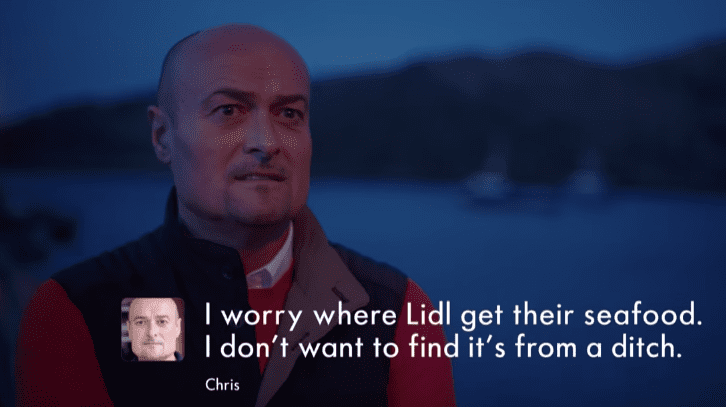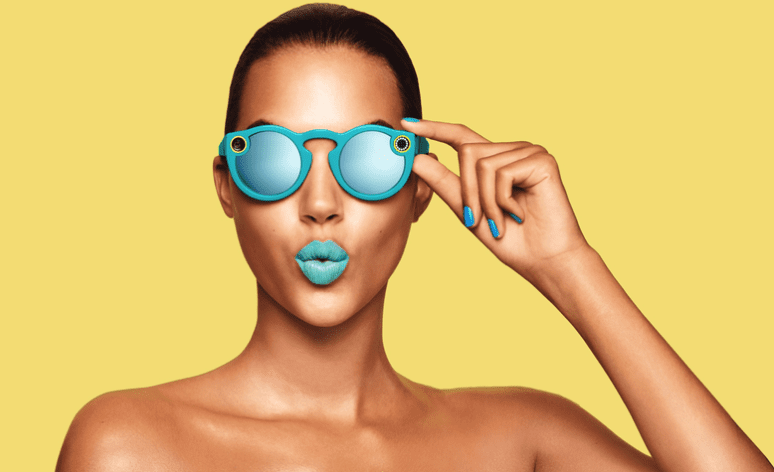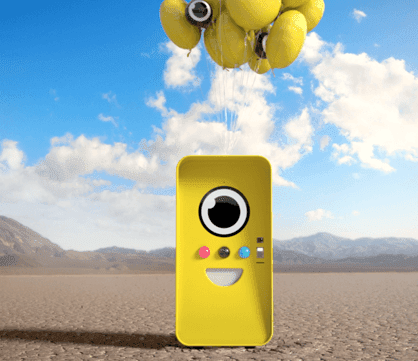The Marketing Hall of Fame: The Very Best Campaigns of 2016
It’s getting that time of year when the nights draw in, the Christmas Ads are on the telly and you’re mulling over when to bother bringing that tree out the loft and covering it in sparkly things. Well, that’s what most people are mulling (along with some wine of course), but us marketers are thinking about our 2017 marketing plans and what we can learn from a year that’s rapidly slipping through our fingers.
With only a few weeks left to go of 2016, we thought it would be a good time to look back at the year and think about what we can learn from the most successful marketing and advertising campaigns of the year, what they have in common and what they did to stand out. We’ve focused on the campaigns that either did something innovative, broke the mold or integrated different channels better than most, because it’s these new or innovative campaigns which offer key lessons for marketers.
1. ‘Make America Great Again’
Okay, so this is gonna make people angry. I get that - for the record, I think Trump is deplorable and it’s a darn shame he’s the most powerful person in the world. But just because you hate his politics doesn’t mean you can ignore how he managed to beat a competitor who spent double what he did. Hillary spent roughly $8.80 per vote versus $4.57 for Trump. If you were a brand looking for a new marketing agency and put it out to tender, and one agency said it was delivering double the ROI for the same spend as the competition, you’d sit up and take notice.
So what did Trump’s campaign do so well that it was able to win the most important electoral contest in the entire world with half the budget of it’s competition (and a deeply flawed candidate facing accusations of assault and recorded evidence of him bragging about sexual assault)? I think it comes down to 3 main factors:
- A clear and effective message.
- Savy Segmentation and positioning that led to a ruthless focus on a key swing state demographic.
- 'authentic’ use of social media (Twitter), amplified by free TV news coverage.
Let’s tackle these 3 factors one at a time to see what marketers can learn.
A clear and effective message
Those stupid bloody hats turned out to be marketing genius. Not because hats are a particularly effective marketing medium. It’s what’s written on them. The phrase itself ('Make America Great Again’). was actually from one of Reagan’s successful presidential bids, but Trump decided to take it for himself and repeat it so many times you couldn’t ignore it if you tried. It was so effective because it tapped into the feelings of a massive chunk of the electorate - that America was a better place a few decades ago when middle-class incomes were rising and plentiful factory jobs could let anyone afford a house in the suburbs and a car. Whether you buy into that idea or not, the point is plenty of Americans did. This serves as a welcome reminder to marketers that it’s much easier to convince someone by going with what people feel rather than trying to change what they feel. A simple example is egg yokes. People like big egg yokes. Let’s say you’ve got two marketing campaigns.
Campaign one: 'Our Eggs have the biggest Yokes’
Campaigns two: 'Our eggs don’t have big yokes, but that’s not actually a bad thing, because actually a lot of the nutrition of an egg is in the white. Trust us, it is. Oh and the white can be tastey too, it’s not all about the yoke you know’.
Which campaign is going to sell more eggs? The first one every time. People are naturally (and rightfully) suspicious when marketers try to tell them to change their preferences, and they’d much rather stick to their gut feeling thank you very much. That’s one reason Trump’s campaign was so effective.
Marketers live in a bubble, and one which is filled with industry gobbledygook like 'Brand Love’, 'Brand Storytelling’ and 'Growth Hacking’. Sometimes they forget that and develop messaging that sounds great within the bubble, but doesn’t really mean anything to those outside it. For example, the best marketers in the world put their heads together and came up with 'Taste the Feeling’ for Coke’s slogan, whilst another well-paid bunch of marketing boffins came up with 'Tastes like this feels’ for Cadbury’s slogan. Notice something? They are both utterly forgetful and clearly had to clear a million and one stakeholders and focus groups. For great messaging marketers need to break out of the bubble and write copy that innately appeals to the people they’re targeting.
Savy Segmentation and positioning that led to a ruthless focus on a key swing state demographic.
Trump didn’t do big data and personalization. Hillary spent millions on big data and personalized ad efforts using social media, email and direct mail. All this data and clever targeting kinda worked- she won over 2 million more votes than Trump after all. But in another, more accurate way, it failed. She may have got millions more voters, but not the voters that counted. Trump won the electoral college 306 to 232 despite having less votes. In marketing terms this is like the difference between attracting loads of traffic that doesn’t convert, Vs attracting a bit of traffic that has a really high propensity to purchase. The smart marketer does the 2nd every time.
Trump ruthlessly focused on a key demographic (disaffected blue collar whites) which he saw could give him a path to winning the electoral college even though they didn’t make up a majority of the electorate. He thus correctly identified the ideal segment to market himself to and positioned him as those people’s champion by distancing himself from the establishment, both Republican and Democrat. Trump has taught marketers a key lesson here, even if it is one they don’t want to here. Big data and hyper-personalisation may sound great, but without properly segmenting your audience and positioning your brand to specifically appeal to the segment that matters to you, it’s all just hot air.
'Authentic’ use of social media amplified by free TV coverage.
We all have that friend who’s always airing their problems on social media. Over-sharing, rubbing their successes in your face and moaning about everything being everyone else’s fault, and often falling out with people. That’s essentially Trump’s Twitter. He doesn’t use Twitter like a brand, he uses it like a particularly gobby teenager. In that sense it is 'authentic’- he really is himself on Twitter. He’s always either bigging himself up or slagging someone else off, coming up with childish nicknames for his enemies like 'crooked Hillary, 'lying Ted’ or the 'Failing New York Times’. The thing about those annoying friends we have on social media is that even if we find them incredibly annoying, they are at least entertaining. We enjoy watching the slow motion car crash unfold when they fall out with yet another person. The same went for the media’s relationship with Trump. He won the nomination because he got several times more free air time than any other Republican candidate, and then he was able to get his message out to the American people on his own terms at half the cost of Hillary’s campaign by saying such outrageous things on Twitter that the media couldn’t help but give him yet more free air time. Maybe this contains some lessons for marketers about the value of PR, but I don’t think they should take away from it that they should start acting like a gobby teenager on social media. That would almost certainly be more trouble than it’s worth.
2. 'Lidl Surprises’
Okay, so this one should be a little less controversial (phew). Lidl’s campaign richly deserves 2nd place because it was genuinely innovative in that it combined social with TV whilst actually addressing customers worries head on. Lidl didn’t dance around the subject or come up with airy fairy tag lines that sound nice in a marketing meeting but mean nothing to the bloke in the street that just wants to know if that 3.99 Lobster he’s just spotted on the supermarket shelf is going to give him the trots or not. Instead, they deliberately broadcast some of the negative stuff people said about them on social media and countered their suspicions by showing them where they source their food from.
With sincerity and good humour, Lidl managed to show prospective shoppers that their worries about Lidl’s products are happily unfounded, and take the people behind the tweets to see for themselves where the food comes from.
By using social and TV in tandem and stepping out of the marketing bubble to actively address customers concerns Lidl are on to a winner. Other brands should sit up and take notice.
3. Snap Spectacles
If Google glass is a case study in how not to bring a brand new product to market, Snap Spectacle provides the exact opposite; a lesson for brands everywhere in how to use PR and great marketing around a product launch to get massive amounts of attention for relatively little spend.
Snapchat did a fantastic job of creating perceived demand around their product. Whilst Google gave out plenty of pairs of Google Glass to nerds to test, they did it in a closed off way which did absolutely zilch to build excitement or enthusiasm.
Snapchat did the exactly opposite. Rather than hand-picking a select group of nerds, they put pop-up stores in form of cool looking vending machines called 'Snapbots’ in various US cities and had people line up around the block to buy a pair.
Everywhere a Snapbot is 'dropped’, crowds gather and long queues form. These are all full of trendy young people spending hours in the queue taking photos and tweeting about being in a queue to buy some Snap Specs. What better way to get an absolute bucket load of free attention on social and free PR when the papers pick up the story. Rather than just being in the press once when it was launch, Snapchat keeps making the papers every time a new Snapbot is dropped in a major city, getting several times the coverage any traditional product launch would likely have received.
4. Virgin Holidays- VR, 360 Video, and Live.
Virgin deserve some special kudos this year for managing to use some of the very latest new marketing tech effectively.
Virgin Holidays decided they’d use VR in store by providing their own headsets working with Google Cardboard technology. To capture the 3D video needed to create the immersive VR experience, Virgin took a special 360 rig and GoPro cameras to a Virgin resort in Mexico. They walked along cliffs, went into hotels, sat on beaches and swam with Dolphins to capture the whole range of experience on offer.
Customers were really impressed with the VR experience on offer in Virgin Holidays stores and responded by increasing their propensity to buy. Although they haven’t given exact figures, Virgin said the results were 'phenomenal’. They also said that not only did sales rise across the board, but sales of trips to the particular resort showcased by the VR technology rose significantly.
It’s not just VR tech that Virgin have been making full use of to show of the holiday experiences they offer. They’ve also produced a series of 360 videos which mean anyone sat at home can look around some of Virgin’s amazing holiday resorts.
360 video has only really become something most marketers can produce from this year, and Virgin are blazing a bit of trail by making such high quality 360 videos so soon after the technology become commercially available. These videos clearly haven’t had the kind of mass reach that TV ads have, but this kind of early innovation today will pay off in future.
Virgin also fearlessly (some might say foolishly) decided to join the growing trend towards live video (thanks to Periscope, Meerkat and Facebook Live) and decided to have a prime time TV ad streamed live from their holiday resorts.
The ad featured live streams from 18 locations, including Hawaii, San Francisco, Bangkok, Dubai and Barbados. The idea being that when someone is sat at home looking at the miserable weather outside and wondering how bad the traffic will be on Monday, the appearance of real people, really enjoying their holiday, live at that exact moment when your sat around bored will make escaping to an exotic destination seem all the more appealing.
The risk paid off in a big way because the fact it was live meant the ad got plenty of free press coverage. The Virgin team managed to pull it off without any massive technical failures, which was probably a huge relief for them. Although if they’d totally ballsed up a prime time ad slot costing several hundreds of thousands and reaching millions on consumers they’d probably have got even more free PR when inevitably every news organization covered how they screwed up the next day! Not all publicity is good publicity, but so long as it’s just a simple error it’s usually better than nothing.
5. H&M - 'Come Together’
H&M’s fantastic Christmas ad, proves you don’t have to be using the latest tech trends to be innovative. Genuine creativity can produce something new and novel that stands out just as effectively. In a way, H&M have just shown the world how to do influencer marketing. They got Wes Anderson, a film director with a cult following to direct a spot which featured Adrian Brody, a star of Wes Anderson’s films. By deliberately shooting the ad in the style of Wes’s films they instantly connected with this group. This, combined with the superior reach offered by TV ads made the campaign a real hit, and it has been hailed as the best UK Christmas ad of the year by many news organizations. Standing out in a crowded market is no mean feat, but H&M managed to do it by getting in a top film director and letting him do his thing rather than crushing him under the weight of brand guidelines.
The ad has clocked up over 5 and a half million views on YouTube, which although a fairly small number compared to the TV reach is still a very nice cherry on the Cake given the vast majority of those YouTube views were organic and thus free.
from Blog – Smart Insights http://www.smartinsights.com/digital-marketing-strategy/innovative-marketing-campaigns-2016/
via Tumblr http://euro3plast-fr.tumblr.com/post/154416995419



No comments:
Post a Comment